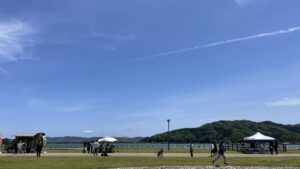070 Another hometown, Kyoto Yosano ( 1/2 ).
☆
今回は、私の故郷のひとつである京都府北部の与謝野町に向かいます。
This time, I will head to Yosano Town in the northern part of Kyoto Prefecture, which is one of my hometowns.
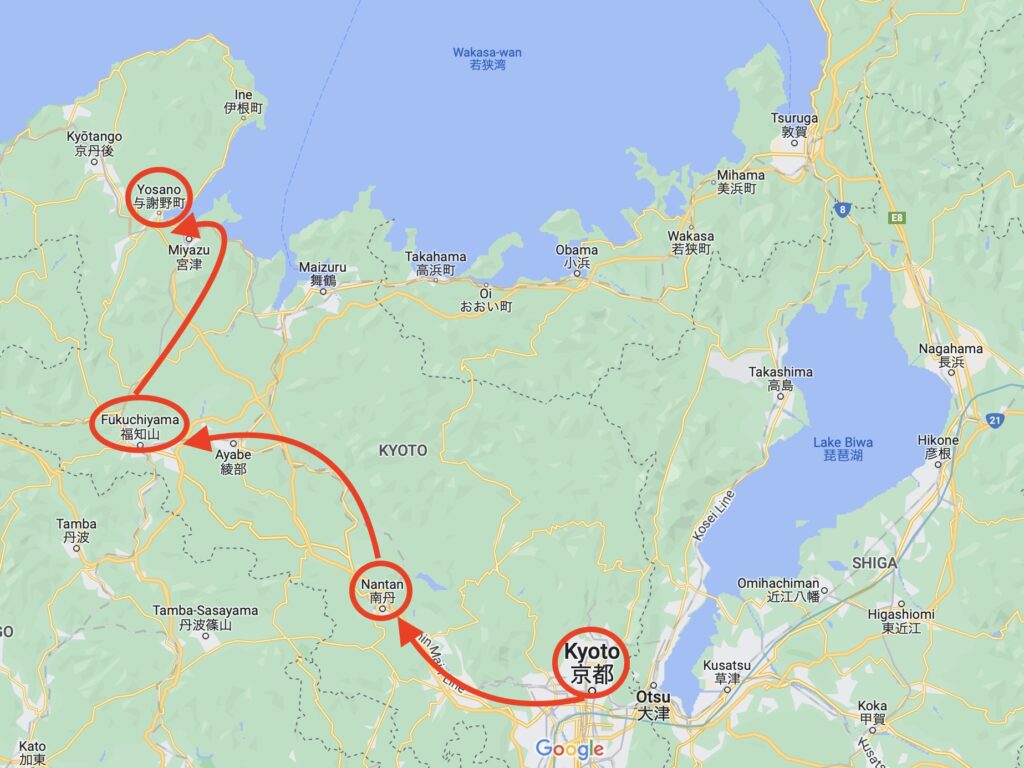
☆
出発は朝の京都駅からです。
Departure is from Kyoto Station in the morning.

京都府内の移動、とりわけ北部地域では車の利用が便利なのですが、今日は電車で向かうこととします。
It is convenient to travel within Kyoto prefecture, especially in the northern area, but today I will go by train.
☆
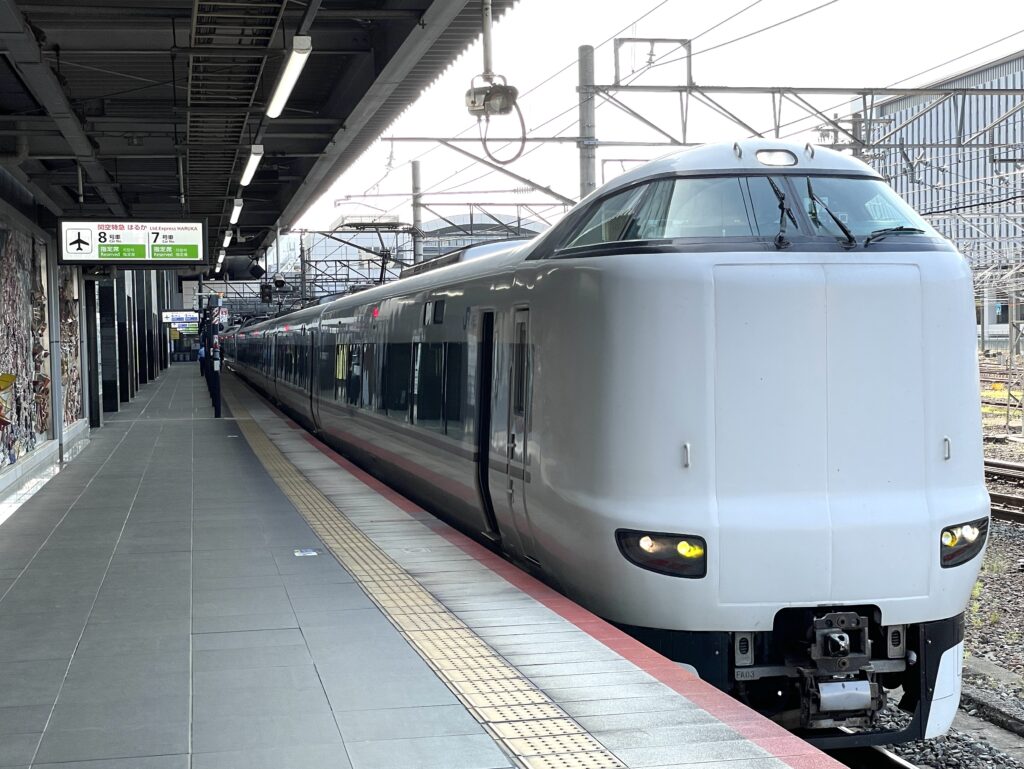
京都駅30番乗り場には、兵庫県の城崎温泉駅に向かう特急列車が待っています。
A limited express train bound for Kinosaki Onsen in Hyogo Prefecture is waiting at platform 30 of Kyoto Station.
☆
京都駅を出発した列車は、順調に北に向かって走ります。
Trains departing from Kyoto Station run smoothly toward the north.
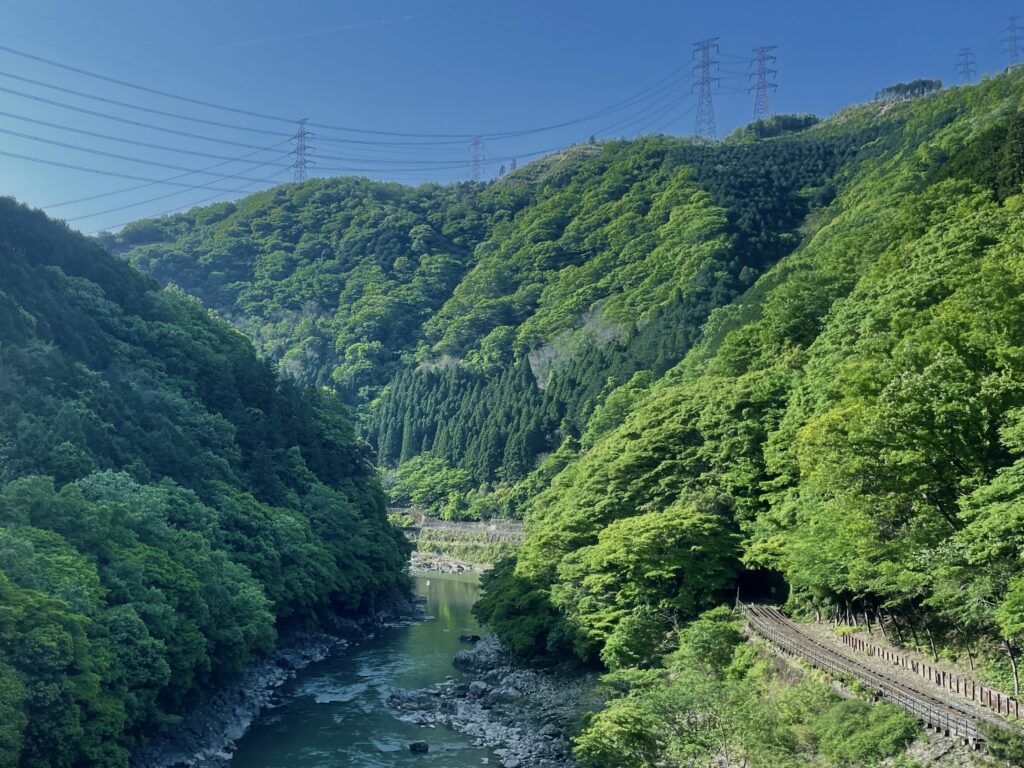
京都駅からわずか15分ほどで、「保津峡」と呼ばれる渓谷を通過します。
Only about 15 minutes from Kyoto Station, the train passed through a valley called “Hozukyo”.
画像の右下に映る線路は、かつてのJR山陰本線の線路です。
The track in the lower right of the image is the former JR San-In Line track.
今では嵯峨野観光鉄道によって、観光トロッコ列車が運行されています。
Sightseeing truck trains are now operated by the Sagano Sightseeing Railway.
そして、この区間ですが、まだ京都市内なのです。
And this section is still in Kyoto city.
☆

列車は園部駅を過ぎ、緑の森を駆け抜けます。
The train passes Sonobe Station and runs through the green forest.
ちょうどこの辺りで、川の流れる方向が南の太平洋側から、北の日本海側へと変わります。
Just around here, the direction of the river changes from the Pacific Ocean side in the south to Japan Sea side in the north.
☆
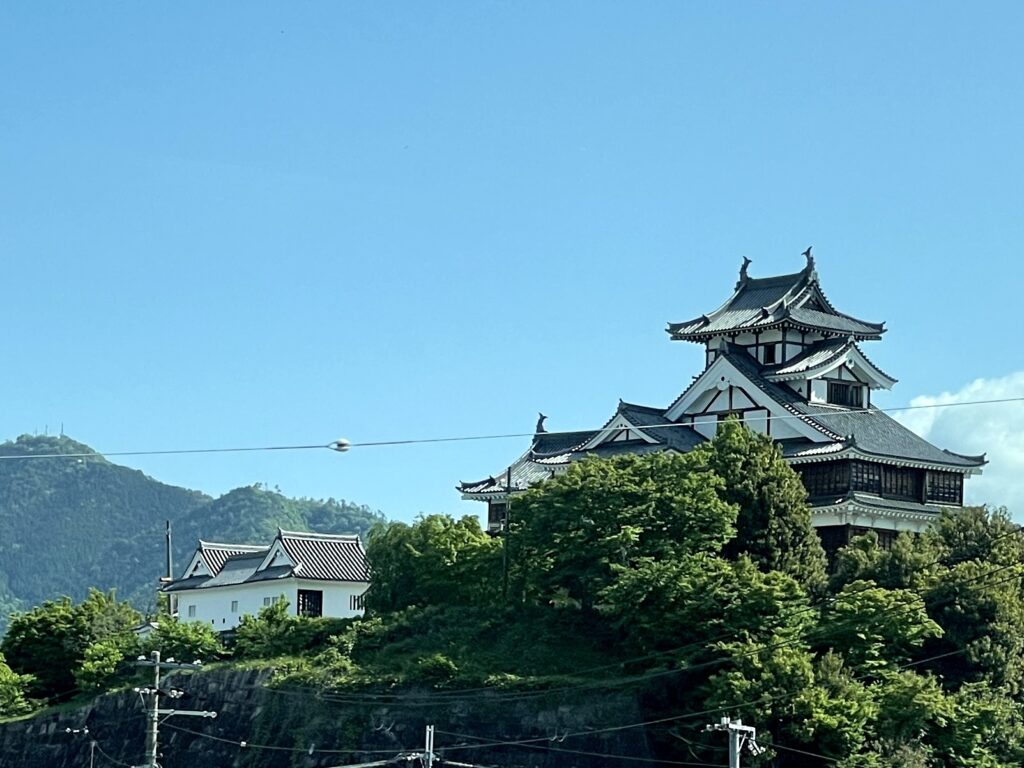
右手には、1579年に明智光秀によって築かれた福知山城が見えてきました。まもなく福知山駅です。
On the right, you can see Fukuchiyama Castle, which was built by Akechi Mitsuhide in 1579. The train will soon arrive at Fukuchiyama Station.
(The names of the people introduced here are listed in the order of “family name → given name”.)
この明智光秀、歴史上では当時の主君である織田信長に反旗を翻した人物としての位置付けですが、地元の方々にとっては今でも誉れ高い名君として評価されています。
This Akechi Mitsuhide is positioned as a person who rebelled against Oda Nobunaga , the lord of the time in history, but he is still regarded as a prestigious master by the locals.v
実際に私の知人にも「光秀」と名付けられた方がおられるくらいです。
In fact, one of my acquaintances was named “Mitsuhide”.
謀反と伝えられる本能寺の変が、織田信長から受けた行為への積年の感情によるものなのか、羽柴秀吉の謀略だったのか、明智光秀の大志であったのか、想像の域を出ませんが、歴史を紐解く面白さが伺えます。
Whether the change in Honnoji, which is said to be a rebellion, was due to the long-standing feelings of Oda Nobunaga for the act, Hashiba Hideyoshi (=Toyotomi Hideyosi)`s plot, or Akechi Mitsuhide’s ambition, is beyond imagination. However, you can see the fun of unraveling the history.
☆
では、福知山駅から京都丹後鉄道に乗り換えましょう。
Then, let’s change to the Kyoto Tango Railway from Fukuchiyama Station.
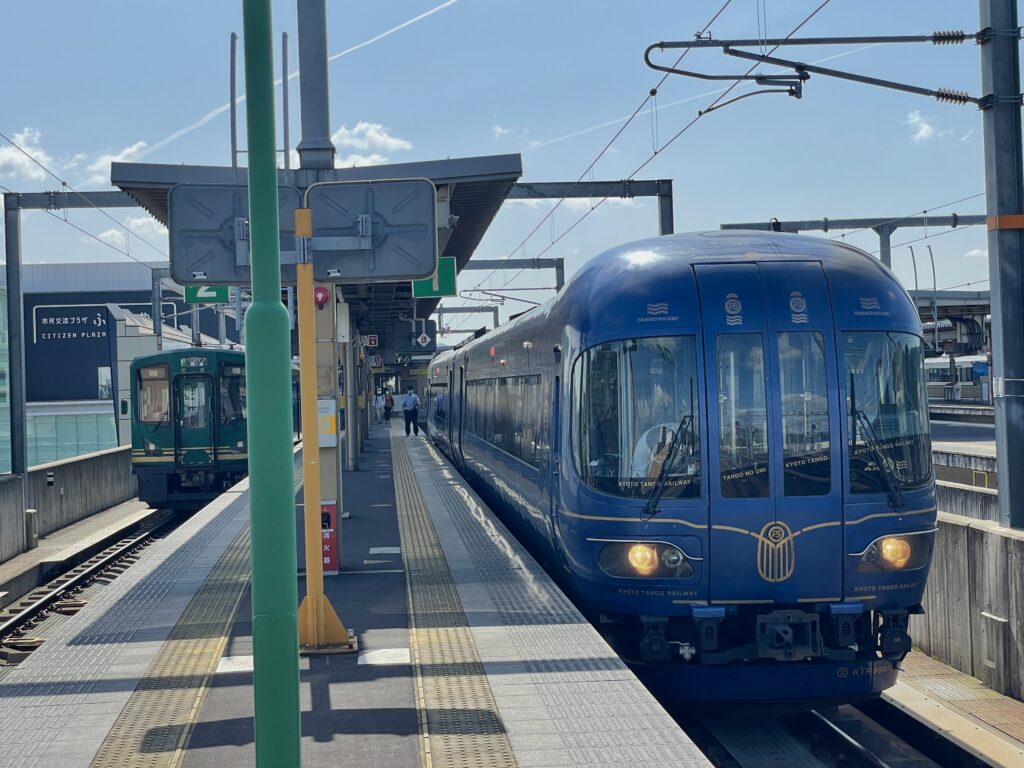
京都丹後鉄道の乗り場に停車しているのは、「丹後の海」という名の特急車両です。
A limited express vehicle named “Tango no Umi (= The Sea of Northern part of Kyoto)” is stopped at the platform of the Kyoto Tango Railway.
この車両は従来の特急車両を、日本の鉄道車両デザイナーの第一人者である水戸岡鋭治さんがデザインしリニューアルされたものです。
This vehicle is a renewal of a conventional limited express vehicle designed by Mr. Eiji Mito-oka, a leading Japanese railway vehicle designer.
☆
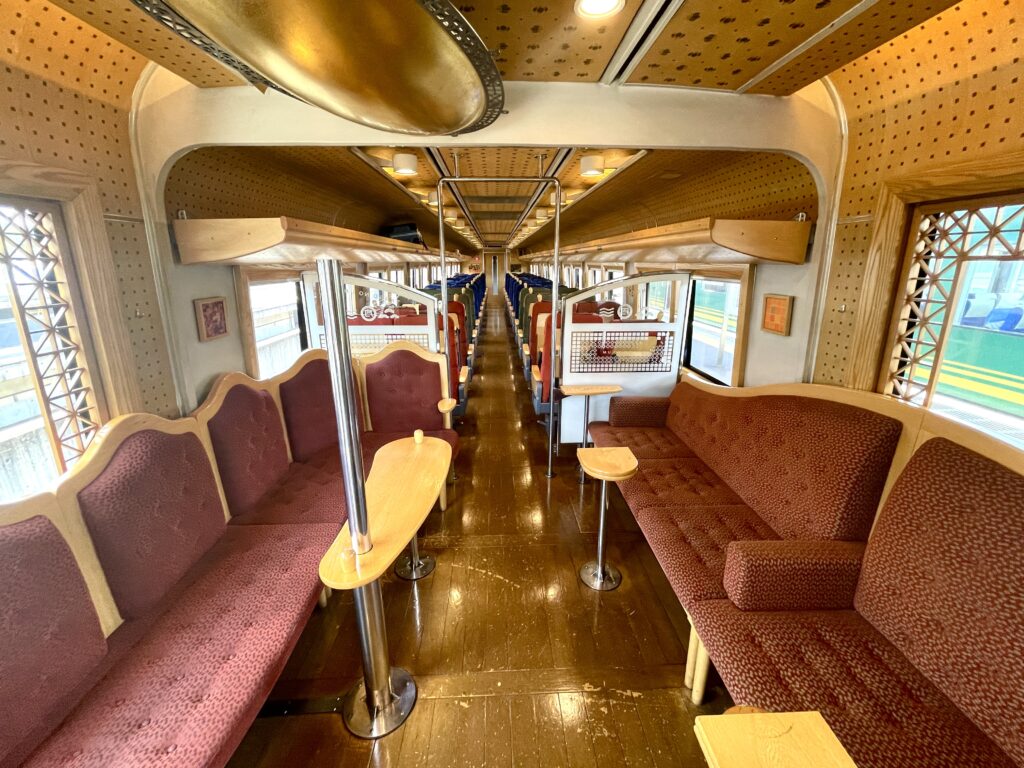
この余裕ある空間のサロン席はフリースペースになっています。
The salon seats in this spacious space are free spaces.
定期列車の普通車両でのこの設(しつらえ)は、かなりのクオリティだと思います。
I think that this setting on a regular train of a regular train is of fairly high quality.っっs
☆
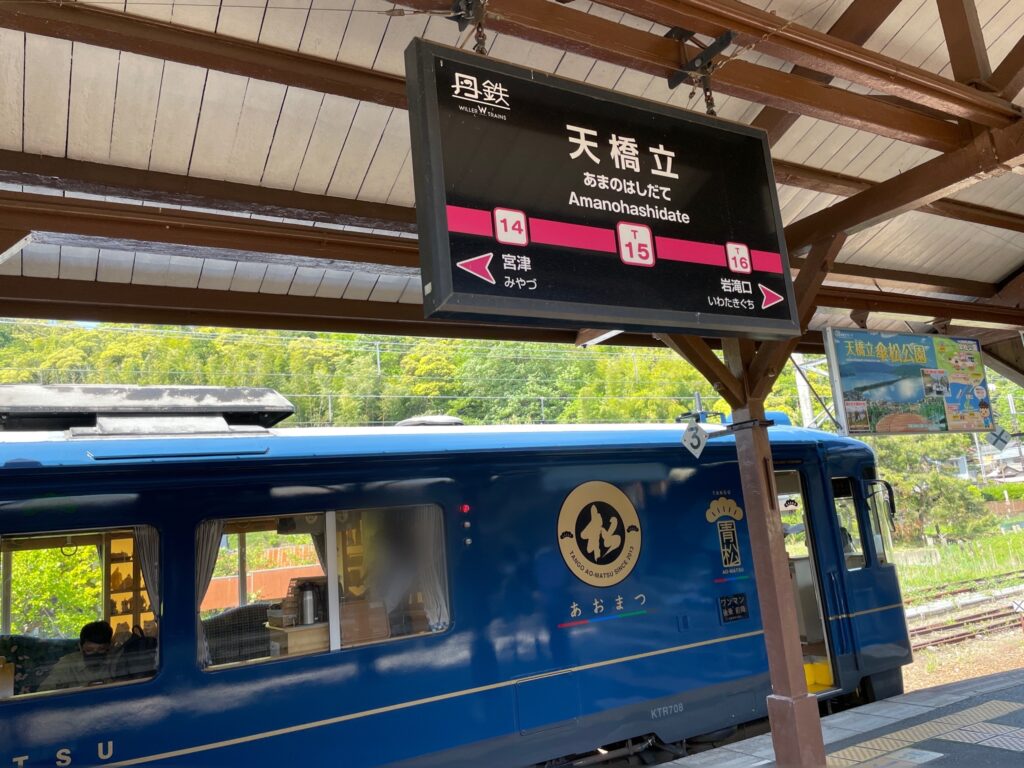
天橋立駅までやってきました。鉄道での旅は、ここまでです。
I came to Amahashidate station. This is the end of the train journey.
停車しているのは、京都丹後鉄道の観光型車両・「あおまつ」です。
与謝野町までは、あと少しの道のりです。
☆
(つづく)
(to be continued)
☆
ご拝読、有難うございました。
Thank you for your reading this post.
またのお越しを、お待ちしています。
I’m looking forward to your next visit.

